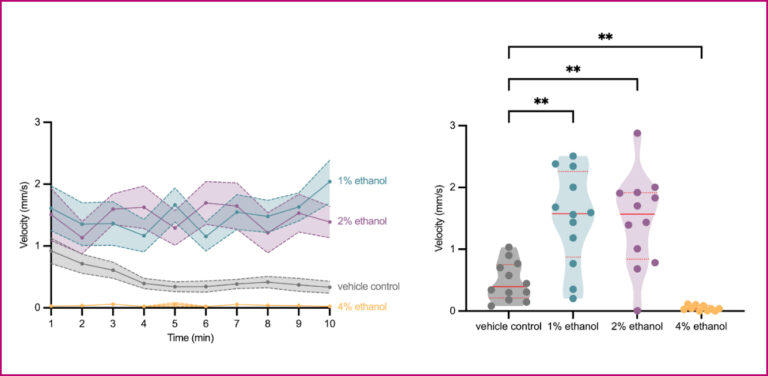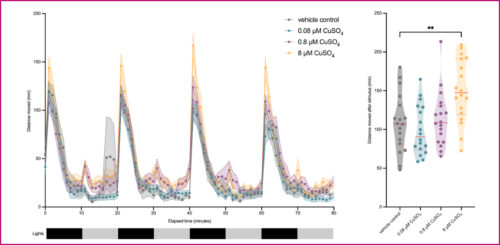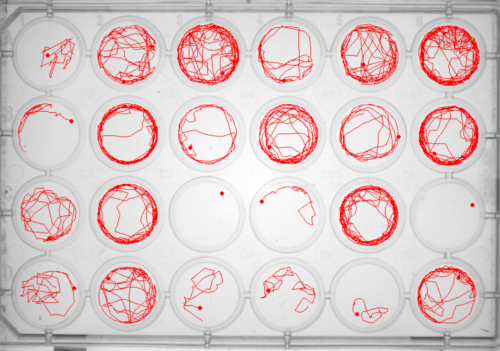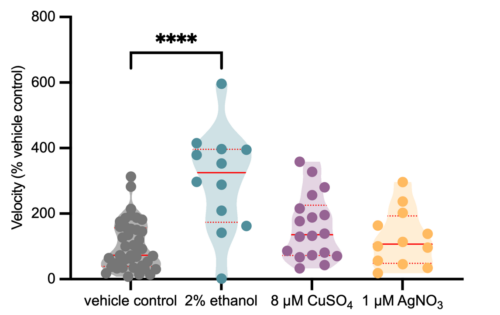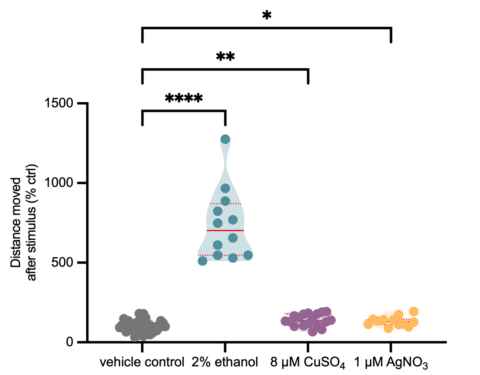neurotoxicity analysis Using Zebrafish
Home > Preclinical CRO Services > Zebrafish Analytical Services > Zebrafish neurotoxicity analysis
More Preclinical CRO Services
Zebrafish neurotoxicity analysis
Our Neurotoxicity Platform using zebrafish measures behavioral characteristics of individual zebrafish larvae in response to potential neurotoxicants. This is an automated phenotypic characterization, performed with the DanioVision instrumentation from Noldus Labs, that can detect potential effects of neurotoxicity such as attenuated response to stimuli.
This assay is available in 96-well high throughput or in 24-well high resolution formats (figure 3).
- Approach:
- Velocity (Fig. 1)
- Light/dark locomotor response (Fig. 2)
- Vibrational startle response
- Total distance moved
- Best suited for:
- Quickly finding out whether a compound or treatment is adversely affecting the neurophysiological functioning of the zebrafish model animal.
- Quickly assessing whether a compound or treatment acts as a neurotoxicant.
Age-matched animals from at least two different groups are compared. The animals are recorded in response to stimuli such as light/dark cycling and vibration. The software identifies and tracks animals to quantify many aspects of behavior, including:
The DanioVision software tracks the behavior of individual zebrafish larvae over time as they explore an arena.
Fig. 1: By extracting multiple measures of zebrafish behavior, such as swimming speed (above), we can test whether a compound (ethanol in this example) has neurotoxicant effects at a range of concentrations.
Fig. 2: Our neurotoxicant assay also tests for behavioral response to stimuli, such as light or dark periods. In this example, zebrafish treated with CuSO4 respond more significantly to a dark stimulus than their untreated siblings.
Fig. 3: Our assay measures the behavioral responses to potential neurotoxic compounds in several multi-well formats.
- Service Offerings:
- High throughput (96 well): for higher volume tests of compounds
- High resolution (24 well): for more detailed information on a few compounds.
- Deliverables:
- A report concluding whether the treatment conditions have changed the neurological responses of the animals to external stimuli.
Fig. 4: Neurotoxicant effects on velocity. Acute treatment with 2% ethanol (blue) significantly increased zebrafish swimming velocity relative to vehicle control treatment (gray), whereas acute treatment with 8 µM CuSO4 (purple) and 1 µM AgNO3 (yellow) did not alter zebrafish swimming velocity relative to vehicle control treatment. ****, P < .0001.
Fig. 5: Neurotoxicant effects on movement following dark stimulus. Acute treatment with 2% ethanol (blue), 8 µM CuSO4 (purple), and 1 µM AgNO3 (yellow) significantly increased the distance that zebrafish moved following the application of a full-field dark stimulus, relative to vehicle control treatment (gray). *, P < .05; **, P < .01; ****, P < .0001.

